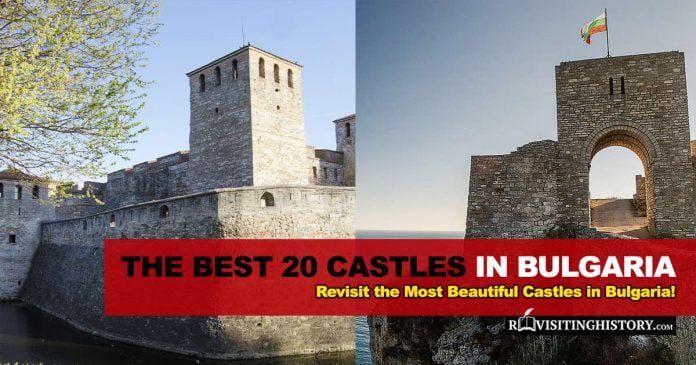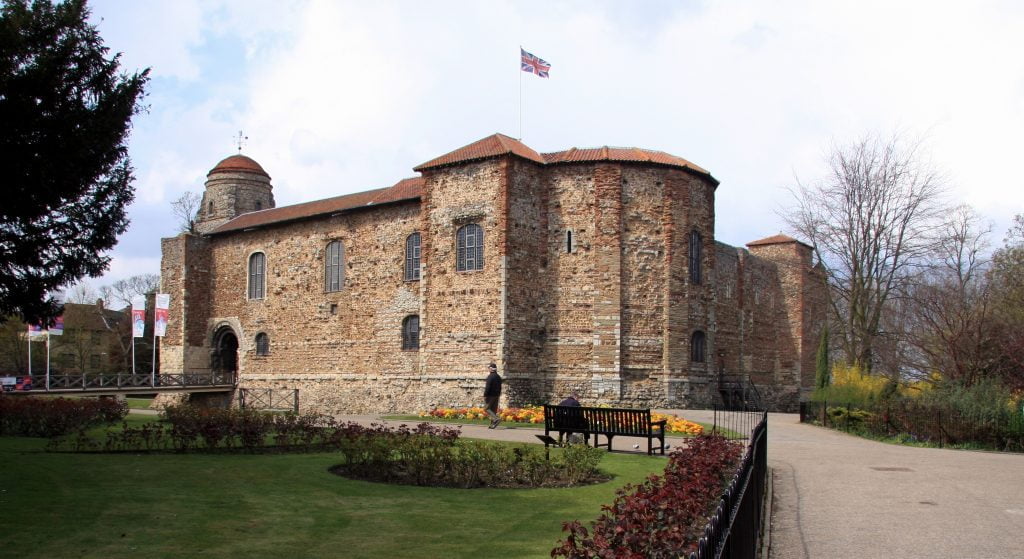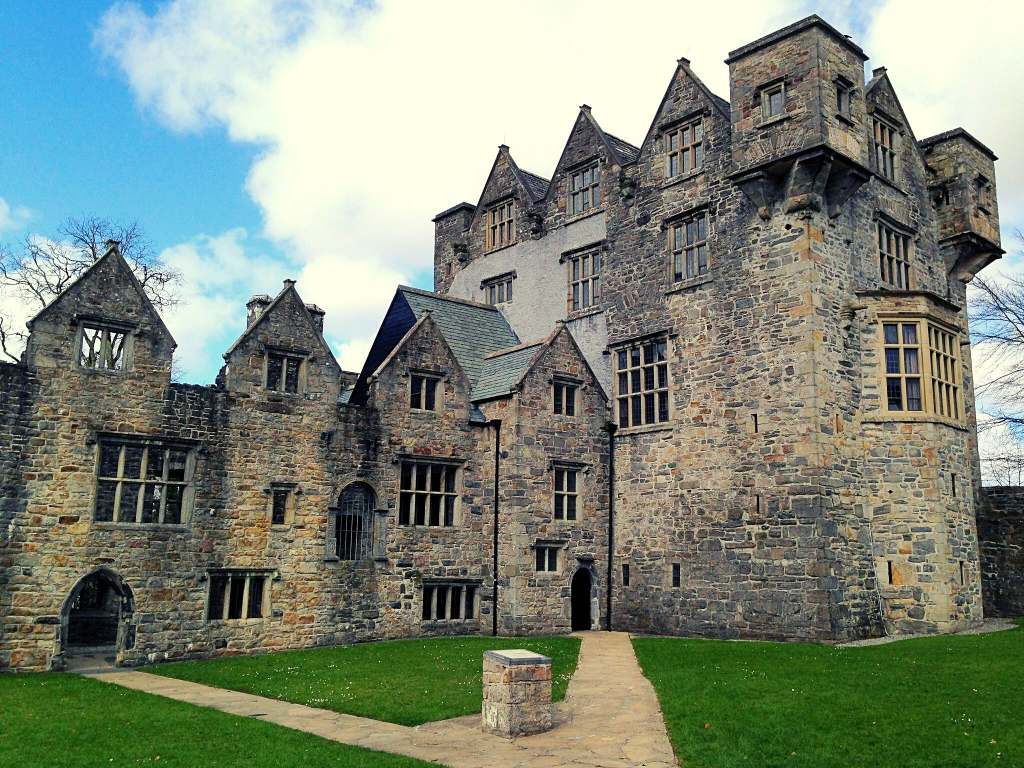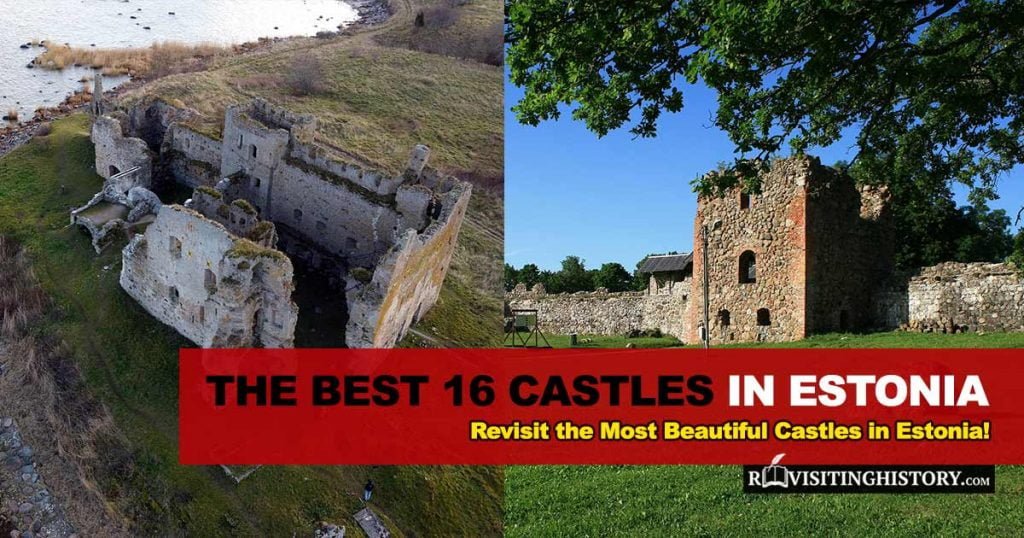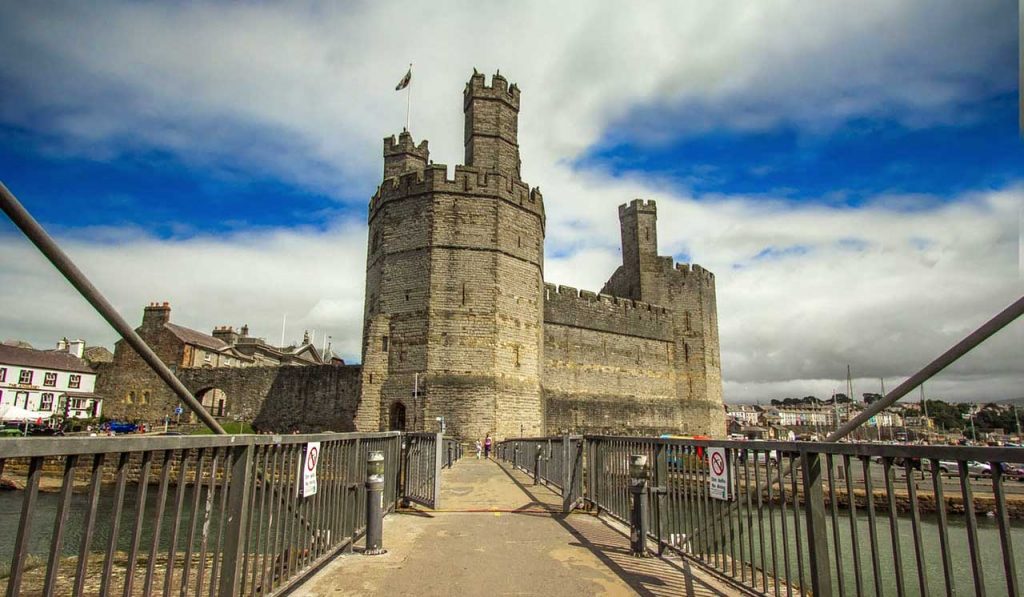Bulgaria is the perfect place to experience Medieval fortresses, some so old they date back to the original influential empires in Europe: Thrace, Rome, Byzantium, and the later Ottoman Empire.
These historical sites strategically located around the Bulgarian landscape combine well-preserved fortifications and stunning scenery. Whether you are touring the splendid coastline of the Black Sea or traveling inland to the hill country, you will be caught up in the history of Bulgaria.
Table of Contents
10 Most Popular Castles to Visit in Bulgaria
The order of the list is based on Google search volume of each castle = popularity.
1. Belogradchik Fortress
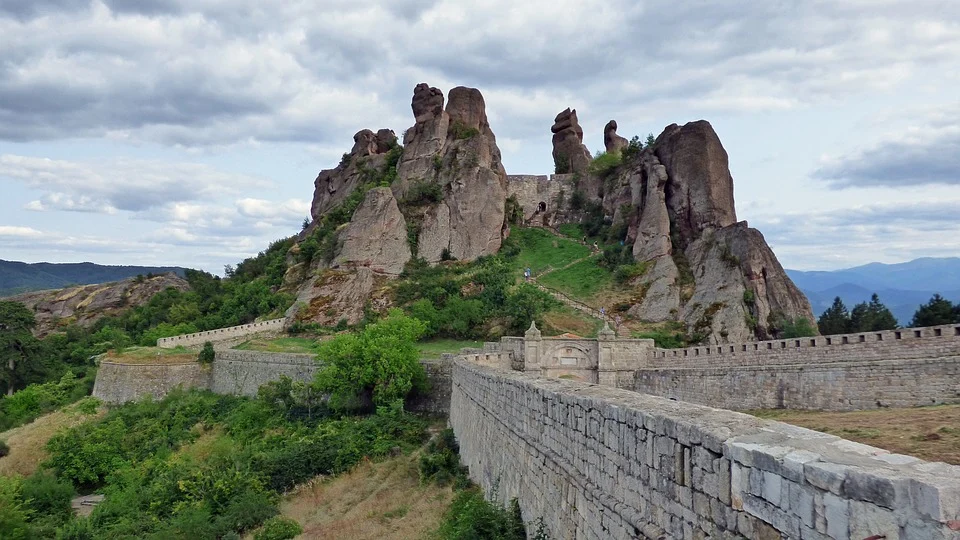
Belogradchik Fortress, also known as Kaleto Fortress, is partially built into the Belogradchik Rocks. These rocks were formed 200 million years ago. The original fort dates back to when the Roman Empire was invading Europe and establishing settlements.
During the 14th century, the Ottoman Empire occupied the remnants of this fortification, reinforcing the structure and adding tunnels and walls. The stone fortress is one of the most ancient structures in Bulgaria and contains elements of Roman, Ottoman, and European architecture.
The fortress was used as a military base in 1885, during the Serbo-Bulgarian war, and then abandoned. Today visitors can enjoy a hike up the rocks and visit the open-air museum. There are three walled courtyards and defensive bunkers, as well as rock stairs and wooden ladders that visitors can climb.
- Location: Belogradchik, Vidin
- Time built: 3rd – 14th century
- Architectural style: Roman
- Touring: Allowed. Visit the official website for more information.
2. Baba Vida Castle
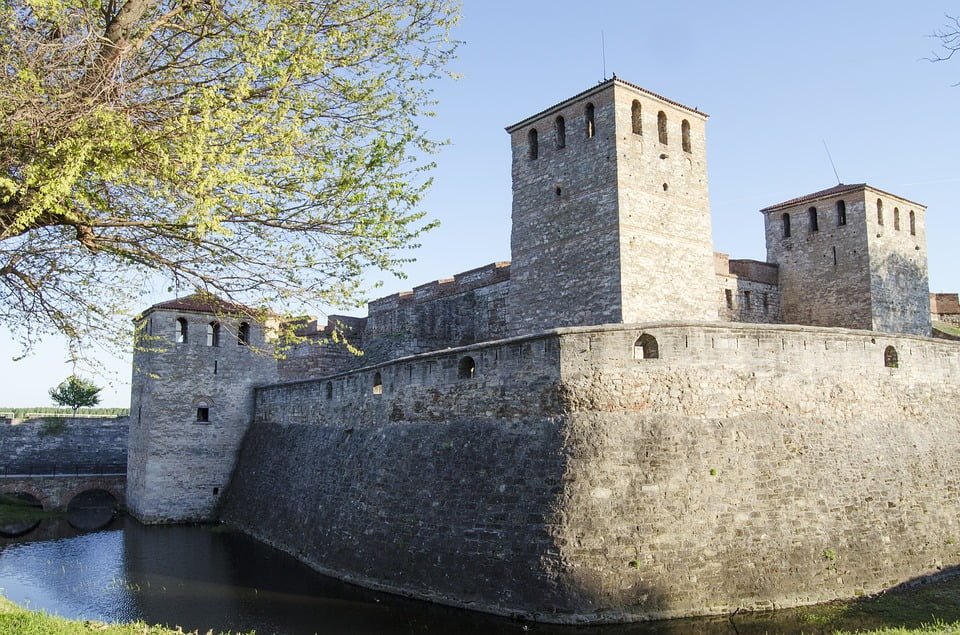
Babini Vidini, Kuli Fortress as it is also known, is the only fully preserved castle in Bulgaria. This is the oldest fortress in the country and is built on the ruins of the ancient town named Bononia. The last Bulgarian King, Ivan Sratsimir ruled from this castle until it fell under the rule of the Turks.
This excellently preserved fort is still surrounded by a moat which transports you back to a time when you can almost see the invaders attempting to cross the moat to invade the stronghold. The fortifications, consisting of two concentric circles, are towers separated by curtain walls.
Visitors to the fort can explore two of the eight towers and see weapons that were used during attacks from the Ottomans. Tour the dungeons and view the torture equipment used in the Middle Ages.
- Location: Vidin, Bulgaria
- Time built: 10th Century
- Architectural style: Medieval
- Touring: Allowed. Visit the official website for more information.
3. Cherven Fortress
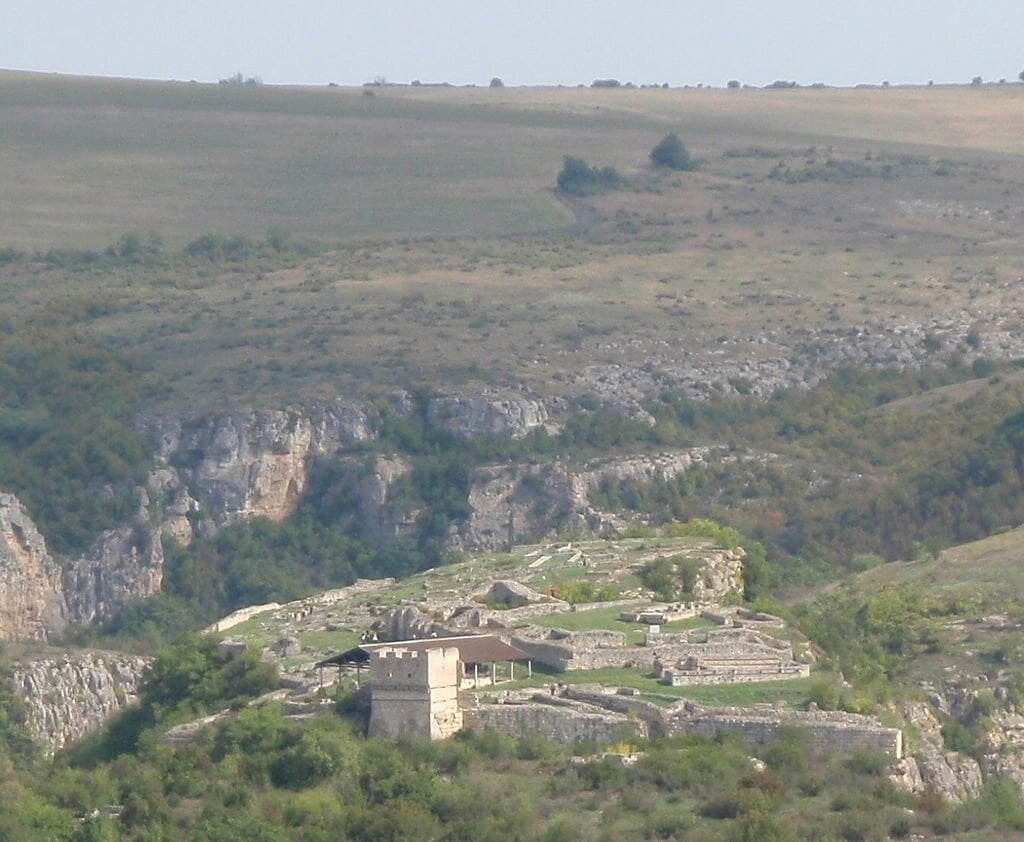
Cherven Fortress became the seat of the Bulgar Orthodox Bisphoric of Cherven in 1235. It was the centre of the military, administration, and cultural activity for north-eastern Bulgaria. Although the fortress only dates back to the 14th century, archaeologists have discovered evidence of inhabitation in the area of Cherven dating back 2000 years.
Invaded by the Ottomans in 1388, the fortress was totally ransacked and left in ruin. The only structure that remained was the 40-foot tower which still stands today. The original fortification was an elaborate construction that consisted of an inner town with skilled craftsman guilds such as ironworkers, goldsmiths, pottery, baking, and more. It was well known in the region for its excellent craftsmen.
Today visitors can see excavations that include thirteen churches, a feudal palace, houses, streets, and workshops where the craftsmen would have made and traded their wares.
- Location: Cherven, Pleven
- Time built: 6th – 14th Century
- Architectural style: Medieval
- Touring: Allowed. Visit the official website for more information.
4. Palace of Balchik
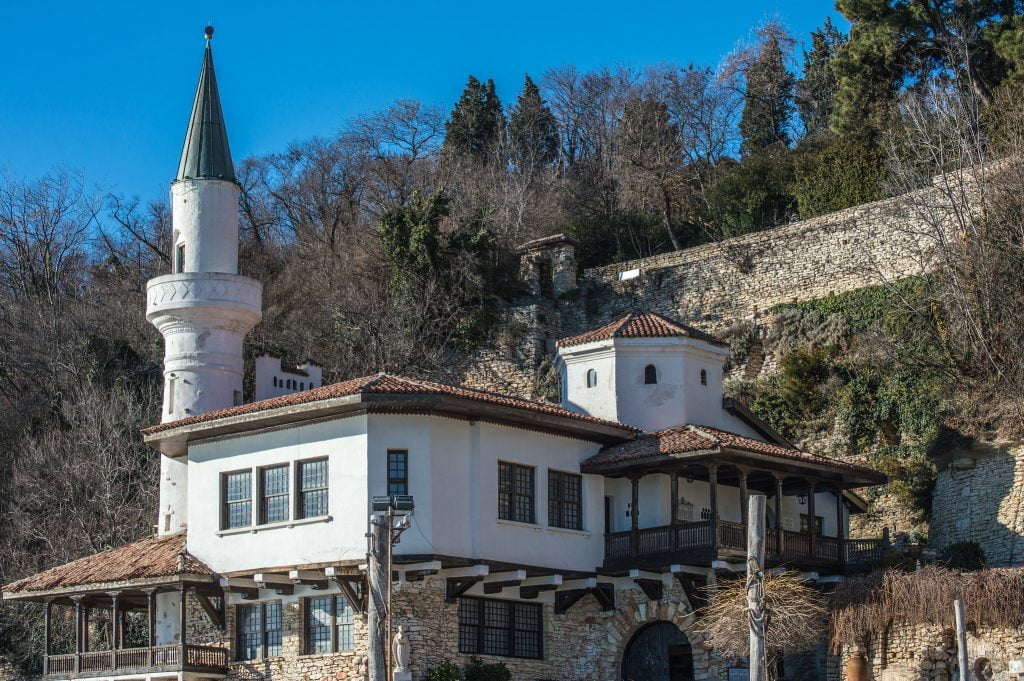
After spending a summer in the area, Queen Maria Alexandrina Victoria de Edinburg of Romania commissioned Italian architects to build her a summer residence that overlooked the Black Sea.
This eclectic complex was built between 1924 and 1927, when Balchik was still part of Romania. Every possible need of Queen Marie was met, which included her personal minaret built next to a chapel.
The Queens Villa, called Tenha Yuvah or Solitary Nest, is built in the traditional Revival period style and is surrounded by Moorish-styled patios. A nymphaeum was a particular favorite area of the royal.
Swiss horticulturists designed the gardens using the natural terrain to create a garden with different landscapes, each personally named by the Queen, for example “Gethsemane Garden” and “God’s Garden”. Today the gardens are managed by the Horticultural Society and contains over 2000 plant species.
- Location: Balchik, Dobrich
- Time built: 20th century
- Architectural style: Romanesque
- Touring: Allowed. Visit the official website for more information.
5. Tsarevets Castle
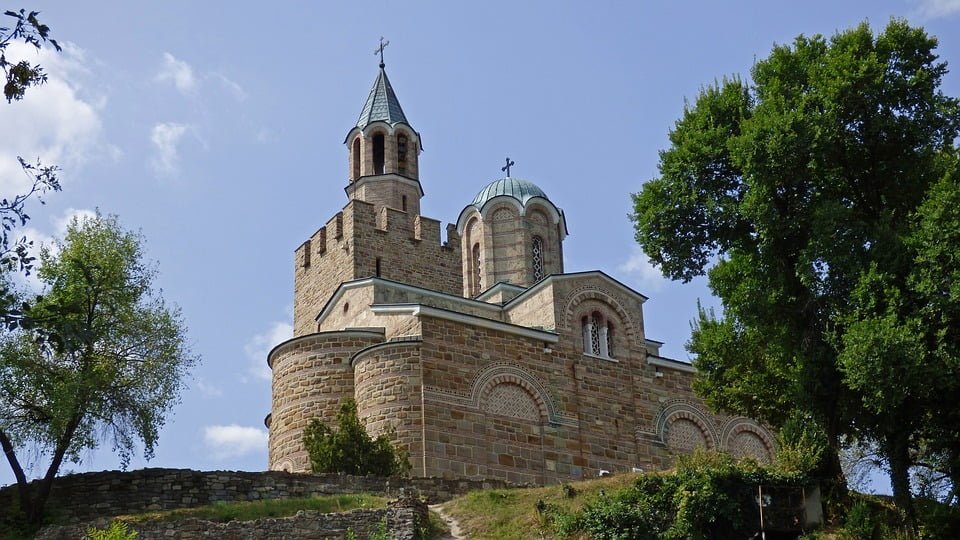
Tsarevets is a stronghold located 676 foot above the town of Veliki Tarnovo. It is an impressive view as you approach the town from any side, visible from miles away. The structure was built by the Slavs and the Bulgars between the 8th and 10th centuries over an original Byzantine fort, built between the 5th and 7th centuries.
The city of Tarnovgrad was the capital of the second Bulgarian Empire. The palace fortress was the residence of the empire and housed the royal and patriarchal palaces. It was also the place where the Empire’s treasure rooms were located. This magnificent fortress was captured, its treasures looted, and what was left destroyed during the Ottoman invasion of 1393.
Parts of the remaining walls and reconstructed fortress can be explored by visitors to this once-majestic palace.
- Location: Tsarevets, Veliko Tarnovo
- Time built: 12th century
- Architectural style: Medieval
- Touring: Allowed. Visit the official website for more information.
Revisit More Historic Places Below or Read Further
6. Lovech Fortress
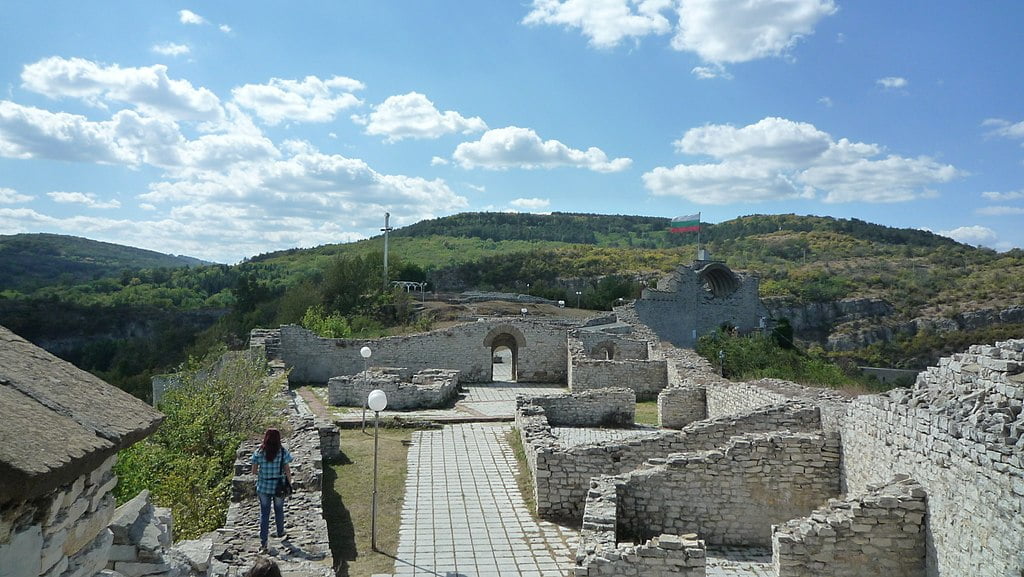
This ancient site has been inhabited since Neolithic times, with the first citadel built by the Romans to keep the First Bulgarian Empire away from their conquest of the territories in the region. It was known as Hissar or Hisarya Fortress.
The ruins visible today date from the 10th century and is the fort where the Peace Treaty of Lovech was signed with the Byzantine Empire, marking the beginning of the Second Bulgarian Empire.
This stronghold kept the Ottoman invaders at bay, and it was one of the last fortresses conquered by the Turks in 1446. By this time, it had become an important trade centre in Bulgaria and was a great loss to the empire.
At night, the fortress comes aglow with hundreds of lights providing visitors with a breathtaking view of the ruins.
- Location: Lovech, Bulgaria
- Time built: 10th century
- Architectural style: Medieval
- Touring: Allowed. Visit the official website for more information.
7. The Castle of Ravadinovo
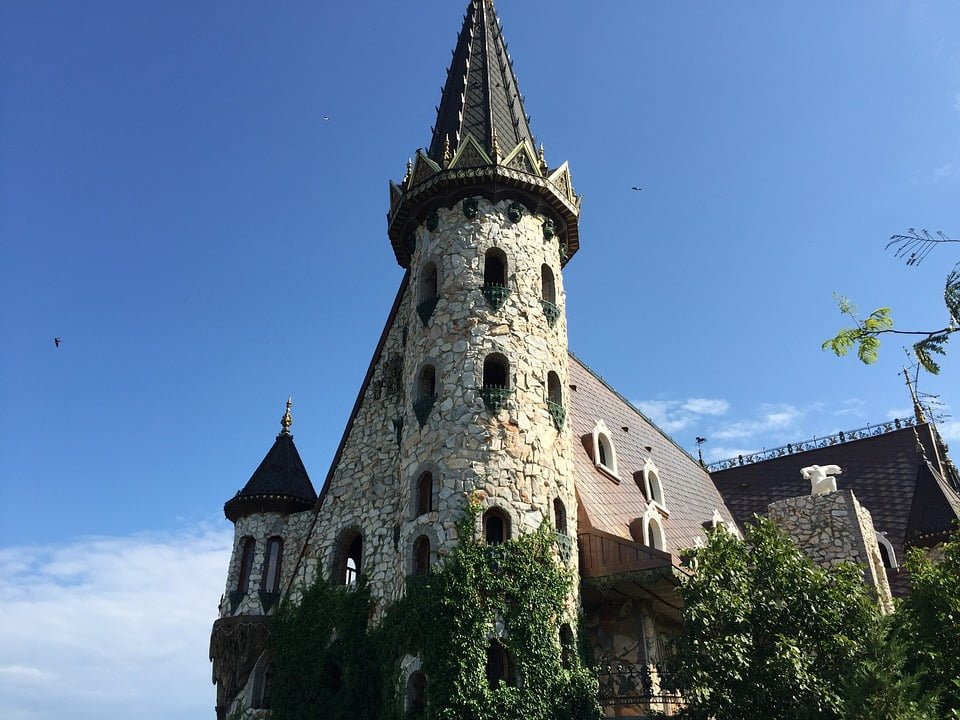
This enchanting Fairytale castle was featured in the film “In Love with the Wind” and is the childhood dream of architect and builder Georgi Kostadinov Tumpalov. In 1996, the eccentric millionaire took a spade and drew a cross on the site where the castle stands today. Tumpalov, his family, and local workers took 20 years to build this dream castle.
Ravadinovo is built with 20,000 tons of marble hewn from the Strandzha Mountains. The castle, chapel, towers, fountains, artificial lake, and walls are all built with this magnificent marble that contains traces of micro-diamonds which makes the stones change color in different light.
In the morning sun, the enchanting castle is imbued with shades of pink; in full daylight the castle is bright white; and during full moon, it shimmers and glows.
- Location: Ravadinovo, Sozopol, Burgas
- Time built: 20th century
- Architectural style: Romanesque
- Touring: Allowed. Visit the official website for more information
8. Ustra Castle
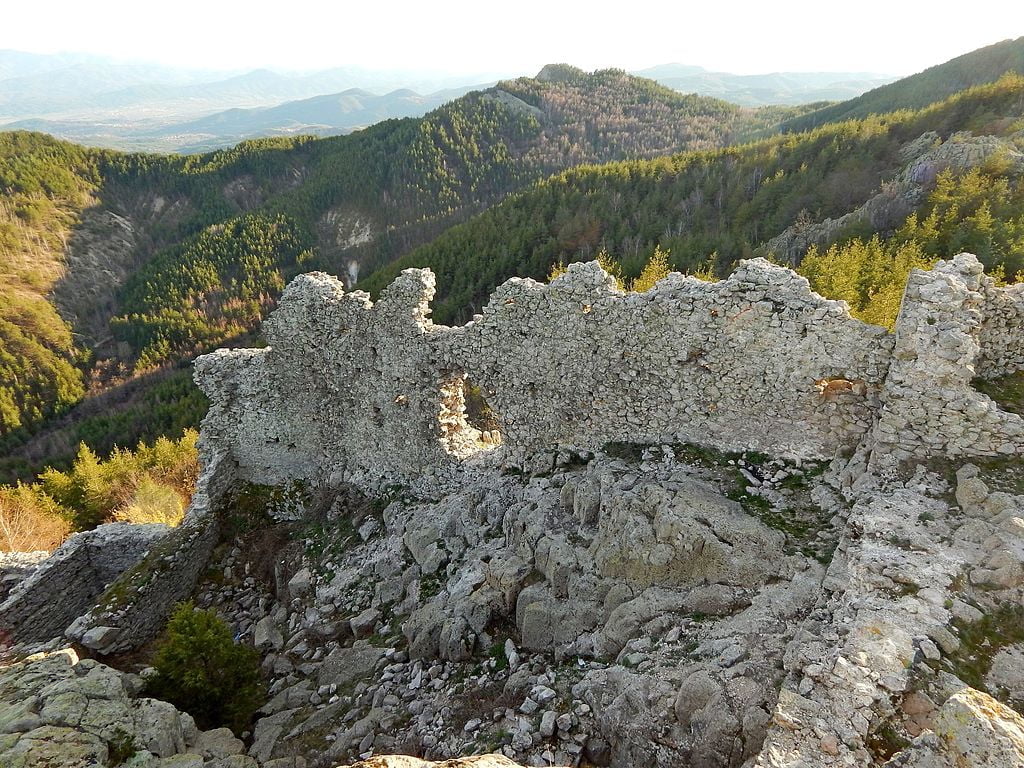
The picturesque ruins of the fort at Ustra are built on the Eastern Hilltop of the Rhodope Mountains. Scholars estimate it was built in the 10th century, while the area was under the rule of Constantine VII Porphyrogenitus, to protect an important trade route.
The armies of Simeon the Great conquered the well-located fortress but it was returned to Byzantium in return for recognition of Simeon’s Imperial title by the Bulgarian rulers. Ustra fortress frequently changed hands between the two empires from the 12th to the 14th century and was abandoned early in the 15th century.
The walls built of stone blocks are well preserved, 33 feet at the base and in some areas 370 foot high. Today you can see one semicircular tower and two rectangular towers that are 3 storys high. Climb the still intact stairways to view the spectacular region from the top.
- Location: Ustren, Dzhebel
- Time built: 10th century
- Architectural style: Medieval
- Touring: Allowed. Visit the official website for more information.
9. Anevo Fortress
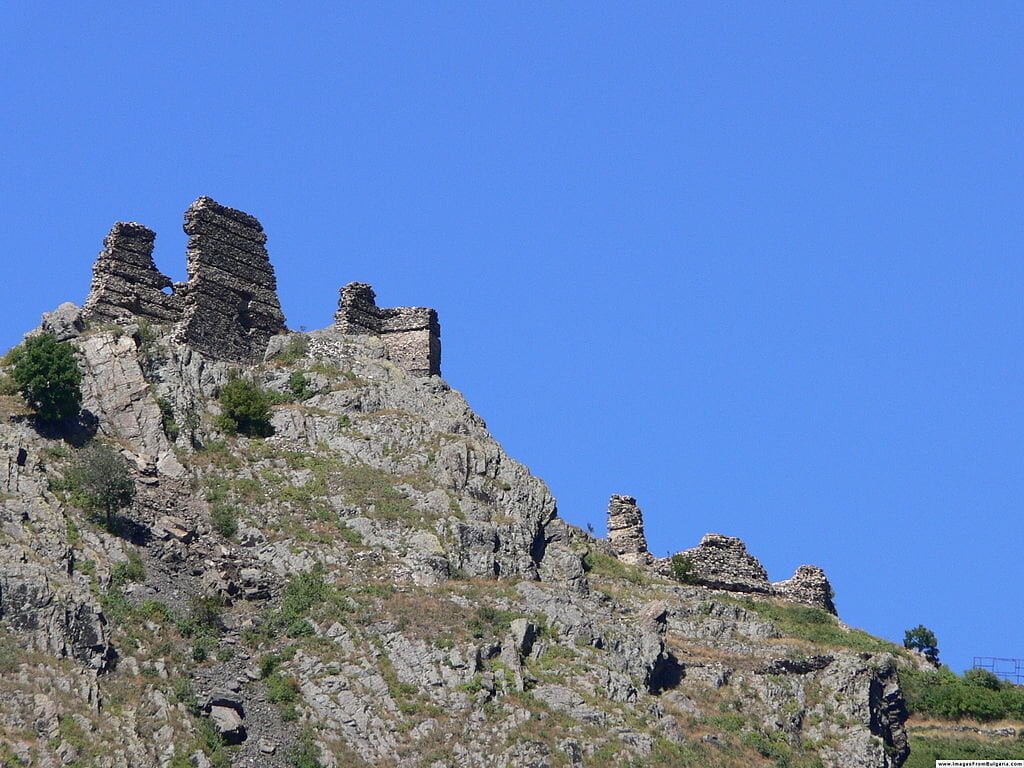
Anevo or Kopsis Fortress is one of the best-preserved fortresses in Bulgaria, located on a steep hill at the southern foot of the Balkan Mountains, two miles from the village of Anevo.
Archaeologists have excavated evidence that confirms this site was used as a stronghold since the 3rd century by the ancient Romans and later in the 5th to 6th century by the Byzantines. Residential buildings and two churches were excavated in the inner city, showing frescoes from the Medieval period.
Fortified by the renegade brothers of Tsar Smilets of Bulgaria, Vovosil and Radoslav, who ruled this quasi-independent region for a short period of time. The original fortified complex covered an area of around 86,000 sq feet, with the inner town the size of 54,000 sq feet. Two towers with a 328-feet-long curtain wall still stand today.
- Location: Anevo, Sopot, Plodiv
- Time built: 12th century
- Architectural style: Medieval
- Touring: Allowed. Visit the official website for more information.
10. Asen’s Fortress
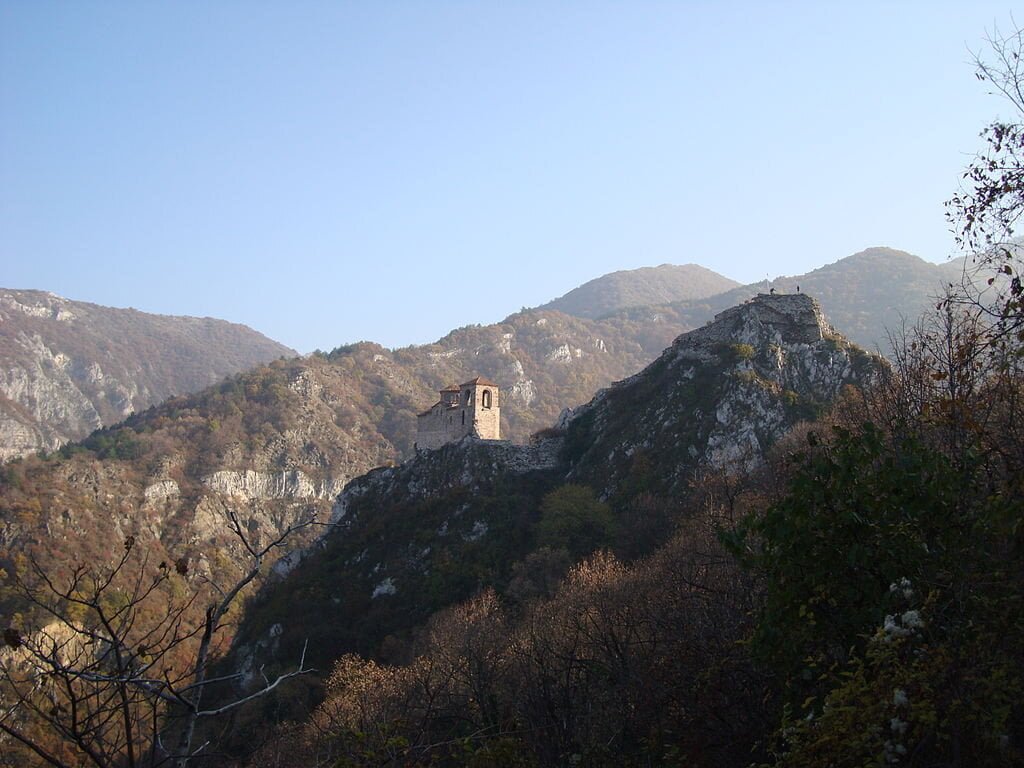
Asen Fortress is named after Tsar Ivan Asen II, the reigning Tsar at the time of the reconstruction in 1230. This is confirmed by an eight-line inscription on one of the outer walls. The fortress is located on a rocky outcrop above the Asenitsa River. From its vantage point 915 feet above the river, the stronghold could defend against Roman invaders.
Archaeological findings date from the Thracian period through Ancient Roman, early Byzantine, and Crusades, until being finally conquered and destroyed by the invading Ottomans. Excavations have uncovered a feudal castle with 30 rooms and notably three water repositories for clean mountain water. The Ottomans left the beautiful brick church “The Holy Mother of God” which is in regular use today by the Bulgarian Orthodox church. On the chapel, walls are beautifully restored murals dating from the 14th century.
- Location: Asenovgrad, Plodiv
- Time built: 13th Century
- Architectural style:
- Touring: Allowed. Visit the official website for more information.
Planning to Visit Nearby Countries? Check Out These Best Castles Lists:
- The Most Beautiful Castles in Romania
- The Most Beautiful Castles in Greece
- The Most Beautiful Castles in Turkey
- The Most Beautiful Castles in Hungary
10 Less Popular Castles Worth Visiting While In Bulgaria
If you are a castle enthusiast, you must take out the time to visit these equally spectacular castles in Bulgaria as well:
11. Gate of Trajen Fortress
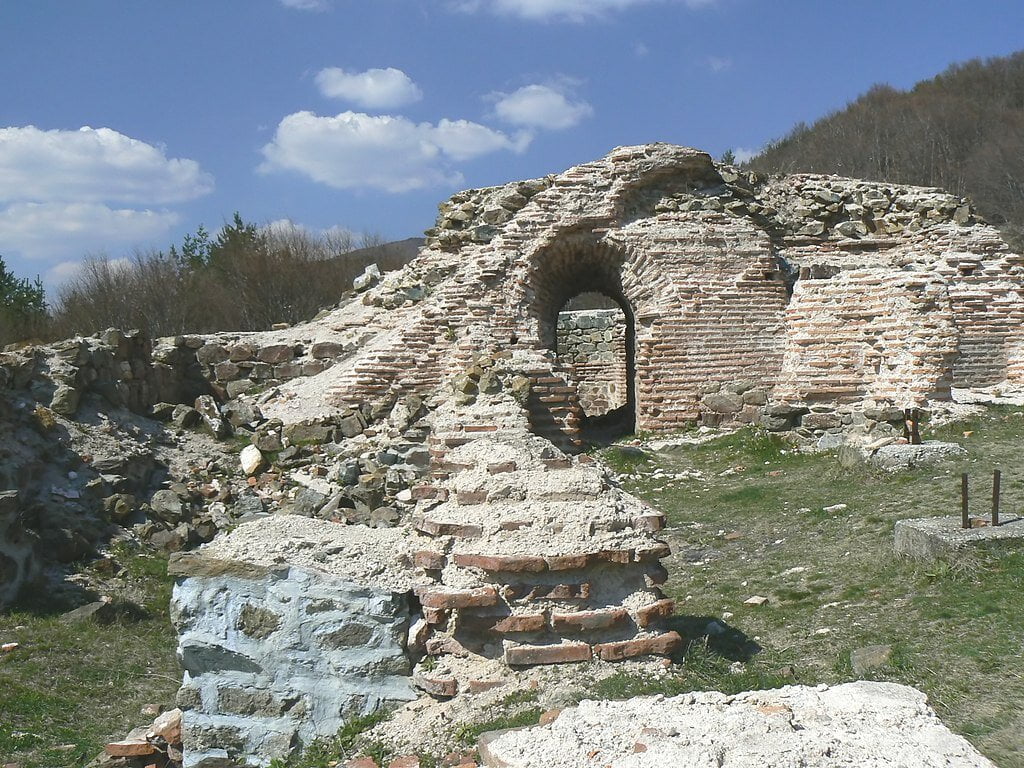
The Romans built the first fortress here after the successful invasion of Northwestern Thrace. Located on the mountain pass between Thrace and Sofia, this fortress is famous for the battle that took place on 17 August 986 during which Tsar Samuil of Bulgaria defeated Emperor Basil I of Byzantium, preventing the invasion of Bulgaria. It is said that the “arrows of the Bulgarians were stronger than the spears of the Byzantines,” by Greek historians.
- Location: Ihtman, Sofia
- Time built: 3rd to 15th Century
- Architectural style: Medieval Ruins
- Touring: Allowed. Visit the official website for more information.
12. Hisarlaka Fortress
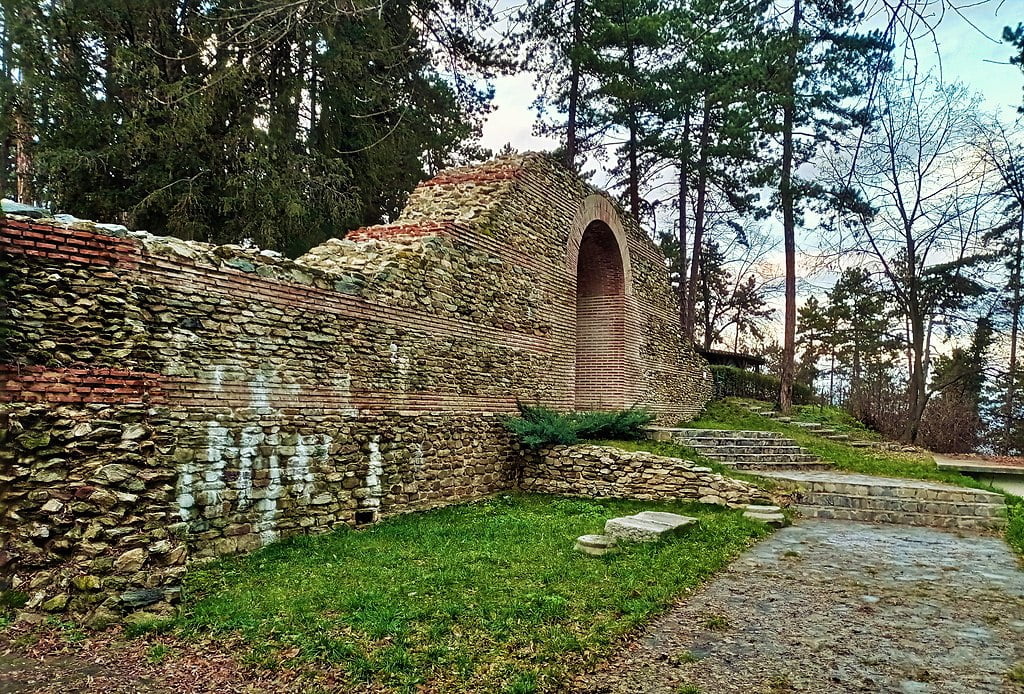
Hisarlaka Fortress was the administrative and religious center of the region from the 5th to the 15th centuries. The expansive fortress was constructed over ten centuries by different rulers resulting in a fortress with fourteen towers and huge curtain walls.The fortress has an irregular polygon shape, and the surrounding towers are circular, triangular, and rectangular, showing different building and defense styles over centuries. Spanning both the first and second Bulgarian Kingdoms, this major stronghold was only conquered by the Ottoman Empire in the 15th century after numerous attacks.
- Location: Hisarlaka, Kyustendil
- Time built: 5th to 15th century
- Architectural style: Medieval
- Touring: Allowed. Visit the official website for more information.
13. Hisarya City Walls
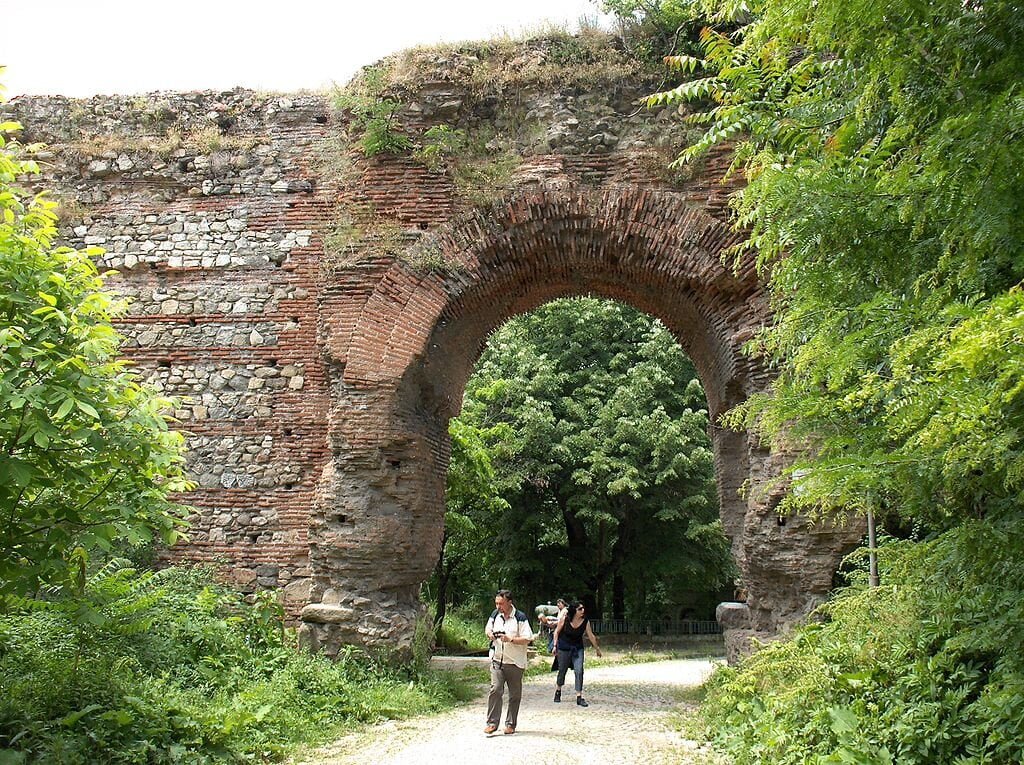
The twenty-two hot springs of Hisarya have been used since the 4th century BCE. The healing mineral waters and warm climate made this ancient city an attraction to the Roman Empire, and they conquered the city in 46 AD.
In 293 AD, Emperor Diocletian renamed the city after himself, Diocletianopolis, and turned this small city into a prestigious Roman city. He built magnificent Roman bath houses, paved the streets, and fortified the city walls.
These huge city walls are almost still intact 2000 years later, an ode to Roman construction still visible today.
- Location: Hisarya, Plodiv
- Time built: 2nd century
- Architectural style: Medieval
- Touring: Allowed. Visit the official website for more information.
14. Kaliakra Castle
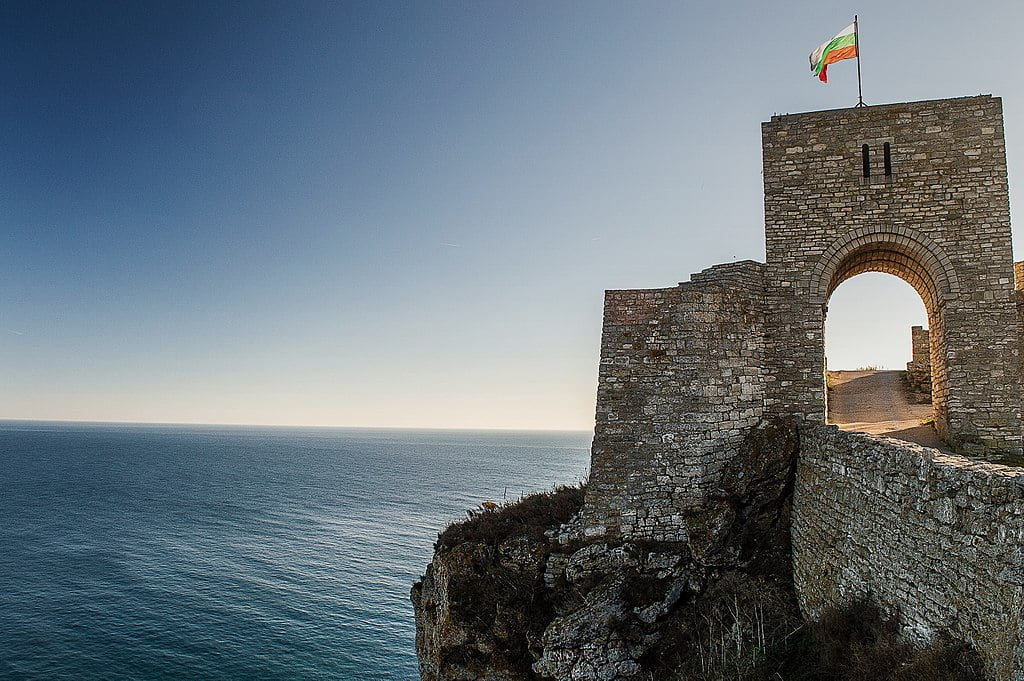
This site has been the location of a fortress since the 4th century when the Thracians built a fortress here known as Tirzis. The fortress has been occupied by Thracians, Romans, Byzantines, and Ottomans and was the site of a major sea battle in the Russo-Turkish war of 1791.
Kaliakra is one of the most breathtaking places along this cape overlooking the Black Sea, the area is natural and unspoiled to this day. Kaliakra is derived from the Greek word “Kalos” meaning beautiful, this site is true to its name.
- Location: Kavarna, Cape Kaliakira
- Time built: 4th to 14th century
- Architectural style: Medieval Ruins
- Touring: Allowed. Visit the official website for more information.
15. Matochina Castle
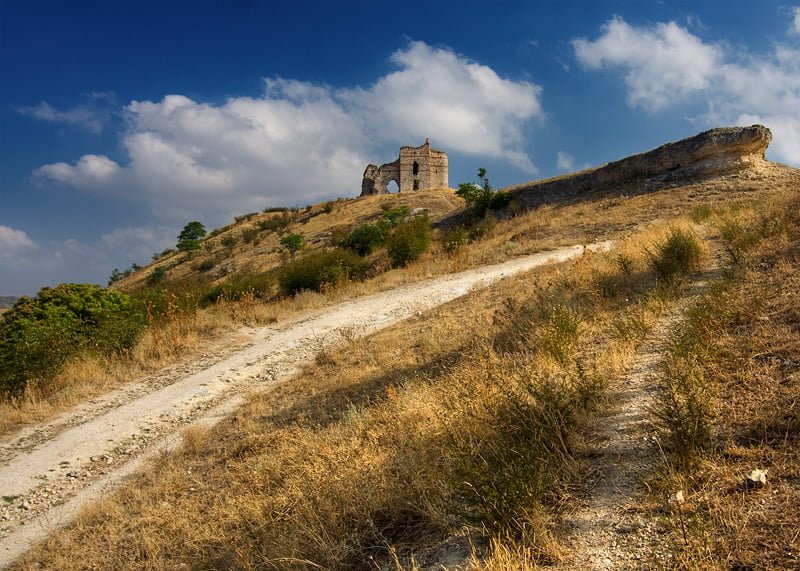
The ruins of this cross-shaped fortress located on a hill above the village of Matochina date back to the 12th century. This ancient stone masonry still stands on the hill in no-man’s land, bordering Turkey with a spectacular 360 view of the region.
Boukelon, its ancient name, was the site of the bloody and barbaric war between the Goths and the Romans in 378 that resulted in the death of the Roman Emperor Valens. In 1205, the army of Tsar Kalovan defeated the Knight Crusaders and captured Emperor Baldwin of Flanders here.
- Location: Matochina, Svilengrad, Haskovo
- Time built: 12th to 14th century
- Architectural style: Medieval Ruins
- Touring:Allowed. Visit the official website for more information.
Revisit More Historic Places Below or Read Further
16. Mezek Fortress
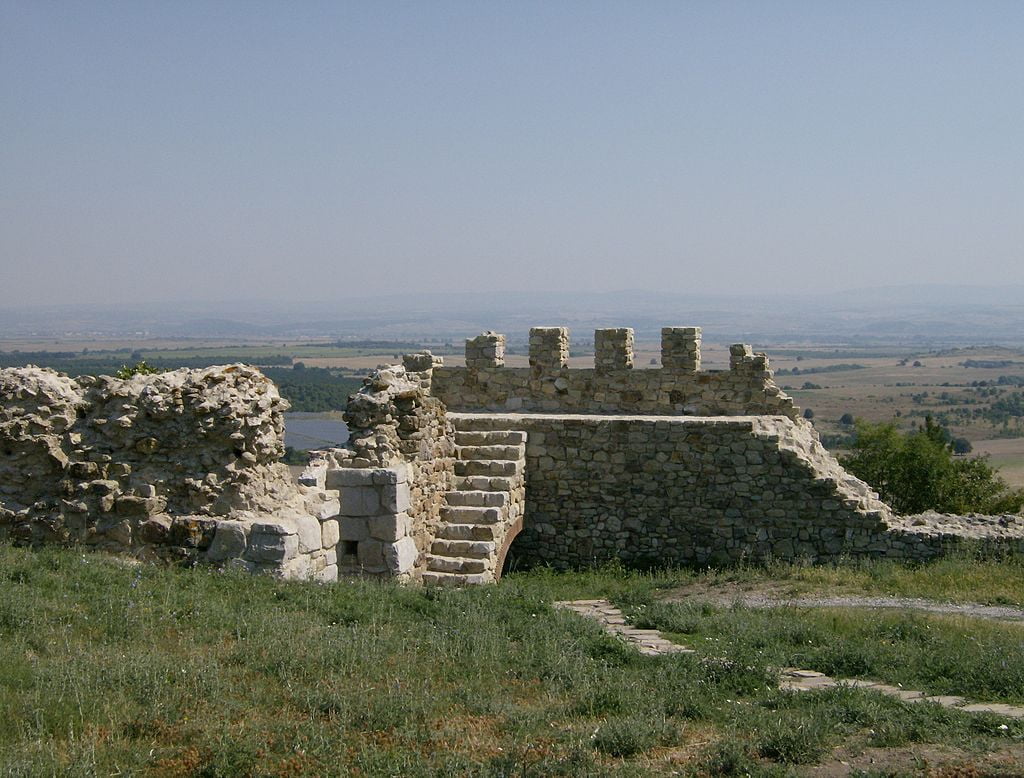
Mezek Fortress that guards the southeastern part of Bulgaria, near Svilengrad, is one of the best-preserved castles in Bulgaria. On one of the last hills of the Rhodope Mountains, nine fortified stone towers still stand today, an impressive feat of engineering that dates back to the 11th century.
This stronghold is strategically located with three cliffs forming part of its defense structure, constructed during the reign of Byzantine Emperor Alexius I Comnenus.Archaeological excavations have uncovered old Thracian with gold, silver, glass and pottery dating back to the 4th century.
- Location:Mezek, Svilengrad, Haskovo
- Time built: 11th century
- Architectural style: Medieval Ruin
- Touring: Allowed. Visit the official website for more information.
17. Nesebar Fortifications
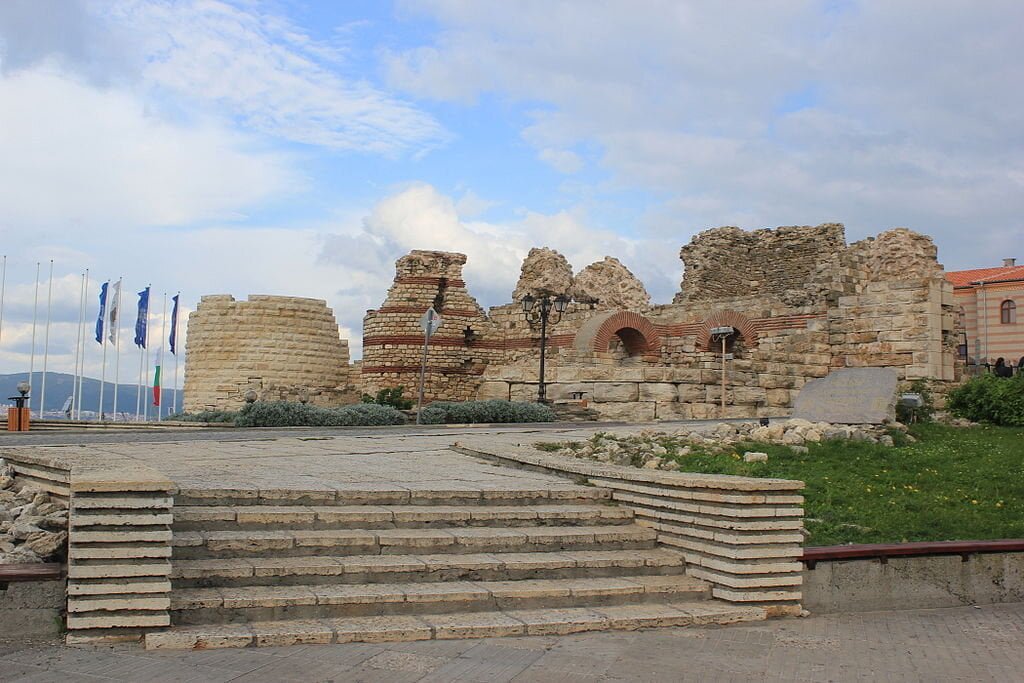
The ancient city of Nesebar was settled by Thracians in the 8th century BCE. Conquered by the Greeks in the 6th century, they named it Mesembria. Ruins of a temple dedicated to Apollo, an agora, and a Hellenistic acropolis can be seen in the old city.
Nesebar fell under Roman rule in 71 BCE and became one of the largest Roman strongholds in the region. Thereafter, the Byzantine and the Bulgarian empires constantly fought for occupation until it was conquered by the Ottomans in the 15th century.
- Location: Nesebar, Burgas
- Time built: 8th century
- Architectural style: Medieval
- Touring: Allowed. Visit the official website for more information.
18. Ovech Fortress
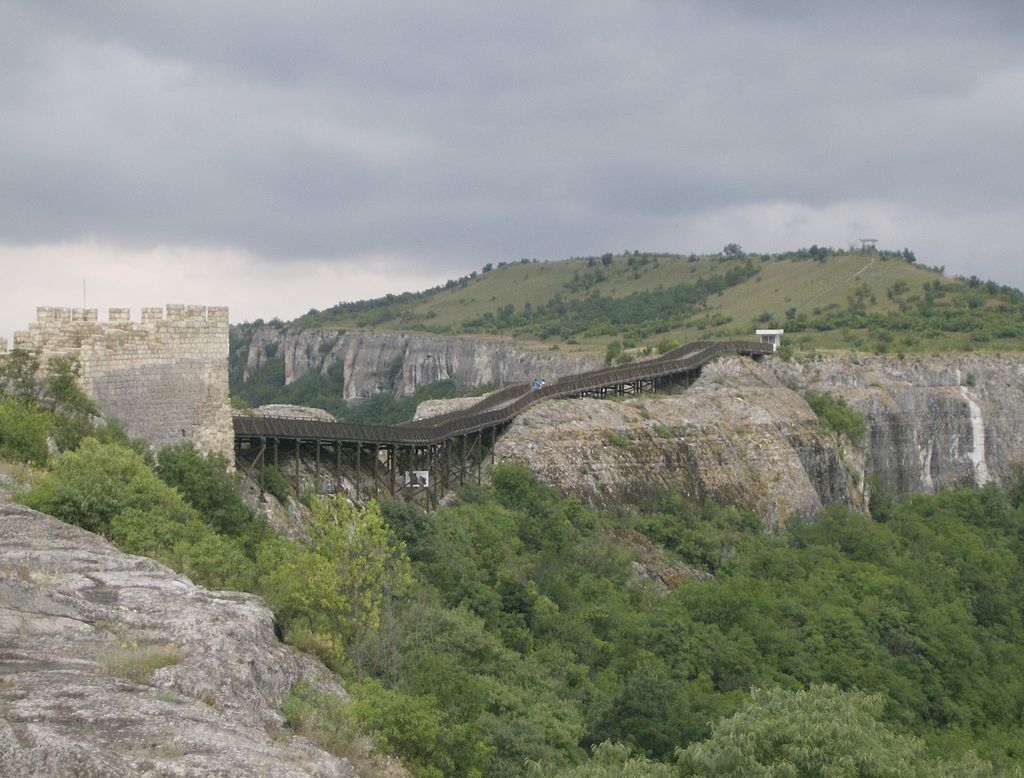
Ovech Fortress, a Byzantine build in the shape of a ship from the 4th century is located on the Kaleto mountain plateau.
During the first ulgarian Empire, it was an administrative and cultural center and in the 14th century, under the Second Bulgarian Empire, it became a military and administrative center. Ottomans conquered the fortress in 1388 after a long siege and used it as a commercial center throughout the 17th and 18th centuries.
Visitors can explore the ruins of Friars’ Holes, Knight’s Prison, Bishop’s Tower, and the grain tanks.
- Location: Provadia, Varna
- Time built: 4th to 18th century
- Architectural style: Medieval
- Touring: Allowed. Visit the official website for more information.
19. Peristera Fortress
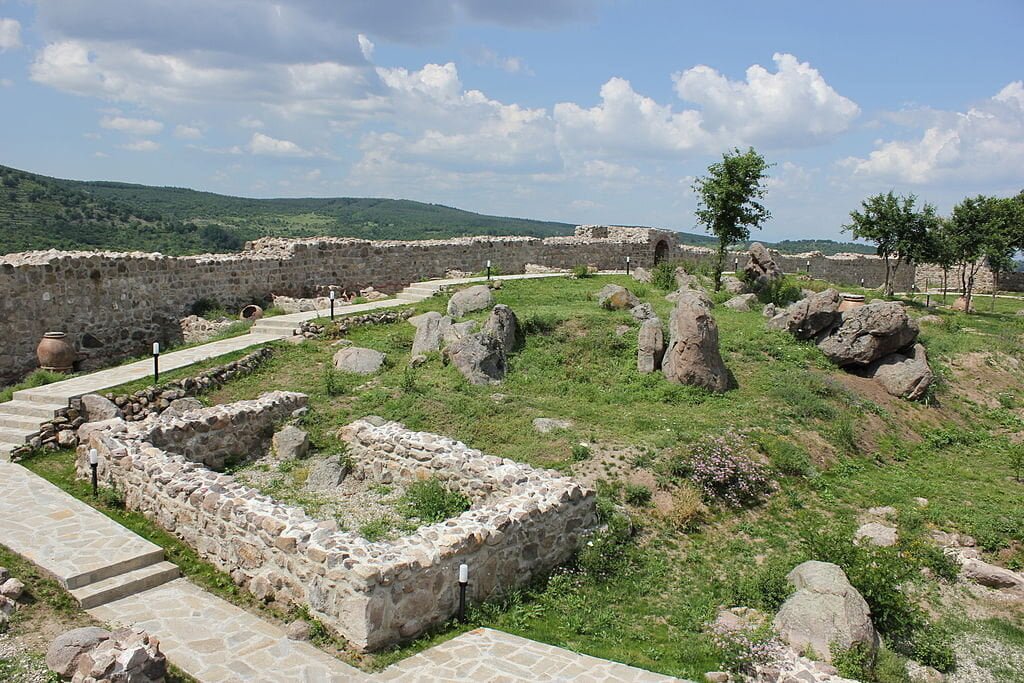
Originally occupied by Thracians in the 4th century, a Sanctuary has been excavated and funerary urns have confirmed the origins.
This fortress located on St. Petka Hill has a magnificent view of the surrounding landscape, strategically located to protect from invaders. This can be confirmed by the layout of the fortifications which includes a citadel surrounded by three enclosures separated by defensive walls.
The enclosed area of the fortress is 9498 sq feet. Fortified walls conjoin six towers and are 830 feet in length total.
- Location: Peshtera, Pazardzhik
- Time built: 4th century
- Architectural style: Medieval
- Touring: Allowed. Visit the official website for more information.
20. Plovdiv Fortifications
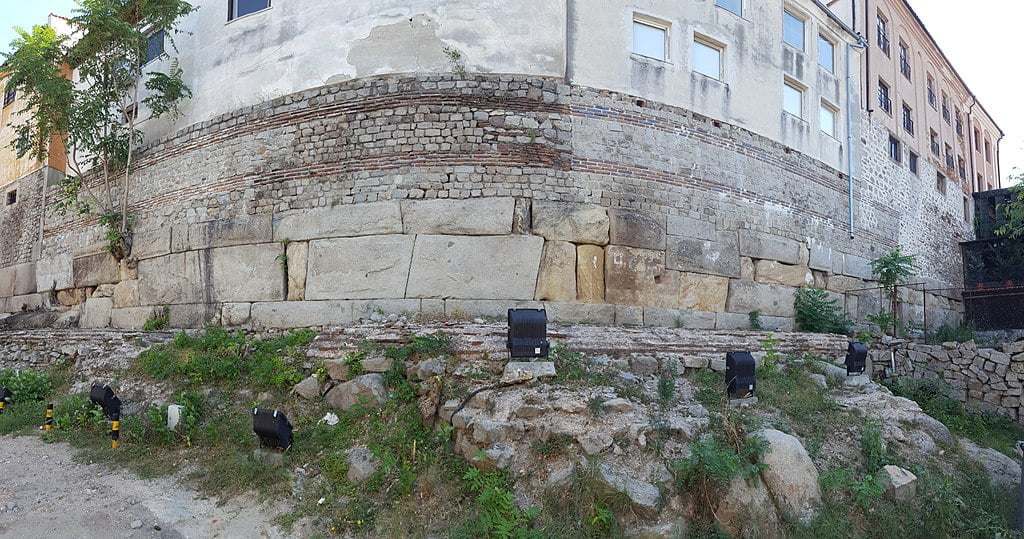
The site of Plodiv is the oldest city that has continuously been inhabited in Europe. Thracians built the first fortifications here, although archaeological evidence has dated the origins back to Neolithic times.
Fortifications were built over 5 main periods between the 4th century BCE and the 7th century CE. Parts of the ancient city walls are used as foundations for modern buildings in the urban landscape of today.
Plodiv was conquered by the Romans, Slavs, Bulgarians, and Ottoman empires–the creation of the cultural, political, and religious variations that can be seen in the metropolis today.
- Location: Polvdiv, Bulgaria
- Time built: 4th century
- Architectural style: Ancient
- Touring: Allowed. Visit the official website for more information.
Planning to Explore Europe? Check Out These Best Castles Lists:
Conclusion
Bulgaria has a fascinating yet turbulent history, with some fascinating legends and true love stories mixed in. Only your own visit to this country fought over by the Thracians, Greeks, Romans, and Ottomans can let you truly experience this unusual country bordering the Black Sea.

